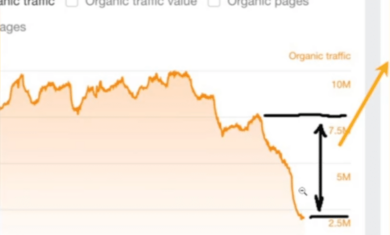If you do much work in the WordPress world, you have likely heard about the new “Gutenberg” editor that is coming to WordPress in the coming months. It’s a drastic change to how you work with posts and pages, and it should be a great thing.
If you’re not familiar with it, this Meetup recap (including slides and a video) should help.
A world of blocks
The biggest change with Gutenberg is that your main WordPress editor is changing from a big window of text you can edit, into a world where you add lots of “blocks” of content as you work down the page. The header “a world of blocks” above is a block. This paragraph is a block.
This quote is a block
- This
- list
- is
- a
- block
This "verse" is a block.

That image was a block
There are literally dozens of different kinds of blocks that you can add to a page, and you can extend that via plugins that offer more kinds of blocks. The end result is that it’s easier to add a video, insert some custom code, build a table, or anything else you want to do.
One of the best things about the block mentality is that the content of the blocks are separate. In the past, many of us have carefully crafted a WordPress post, perhaps inserted some special code from MailChimp or somewhere, and then watched in horror as WordPress “fixed” it for us. With separate blocks, that’s not a concern.
This site is now using blocks
To help test it further, I’ve installed the Gutenberg plugin and am now using it full-time on this site. You probably should not do the same. While the plugin is nearly ready for prime time, it’s still technically in beta and could do some strange things.
While you shouldn’t use Gutenberg on any production sites, you absolutely should be playing with it on a test server somewhere. If you don’t have the means to set up a test server, you can create an account on this site to try it out for yourself.
Will it break my current site?
Probably not. The specifics of how the new editor is going to be introduced is still up in the air, but some of the basics give me peace in knowing that most sites will be fine.
First, WordPress powers 30% of the entire internet — we’re talking about hundreds of millions of sites. You know they’re going to be incredibly careful about how this rolls out.
Second, the way your old posts and pages will be treated should be solid. One of the blocks you can add is a “classic” block; a block that works just like the editor you’re already used to. When you upgrade to WordPress 5.0, it’s likely that your existing posts and pages will be changed to use the Gutenberg editor by taking all of the content on that page and putting it in one big classic block. No mess, no problem. It should work well.
If you then want to spend the time to rebuild it using separate blocks, go for it. If you don’t, that’s fine too.
When is it coming?
As of now, there is no official launch date for Gutenberg. It will be part of WordPress 5.0, and will be released when it’s ready. Most suspect that will happen in the next few months, though no one knows for sure yet.
I’m excited about this big shift for WordPress and I hope you are too! I’ll certainly be sharing more (either here or on the GreenMellen blog) as it approaches.
What are you most excited (or most scared) about with Gutenberg?





[…] Amazingly enough, we still see evidence of Gutenberg today. One of the first blogging platforms was Movable Type, which is the style of machine that Gutenberg created. Of course, you also have WordPress, which itself is a nod back in time, and the latest version of their editor is simply known as “Gutenberg“. […]